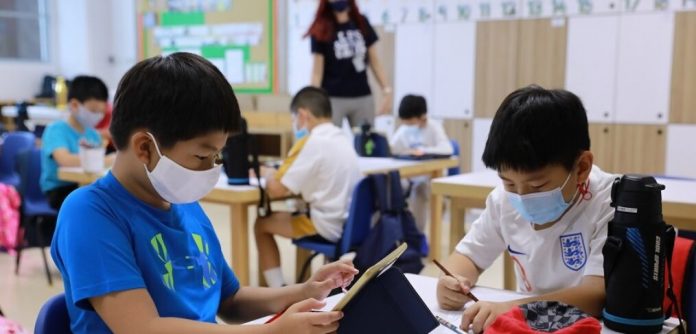Matt Salusbury examines the potential long-term impacts of the Covid-19 pandemic on international schools
International schools are preparing to re- open in September, many with reduced class sizes or staggered shifts, though exact arrangements vary depending on the country.
In Dubai, in the United Arab Emirates, for example, the authorities have delegated to schools and parents the decision on whether to fully reopen, run classes in staggered shifts or continue online learning. Neighbouring Oman, by contrast, has yet to formally make a decision on how schools will operate.
But will schools recover in the medium term?
A recent report by ISC Research, In the light of COVID-19, concludes they will, not least because of the resilience built into a sector that’s weathered other crises.
While expatriate families may leave a country en masse, history shows there’s an ever-increasing demand from wealthier local families for a “Western” international school education, as the experience of 2008 financial crash shows.
International schools began as schools for the children of expatriate families, many of whom had generous employee relocation packages, including school fees. Expatriate families were seeking an education in their own language and a curriculum compatible with their home country.
By 2008, there was already a shortage of international school places in Qatar, Switzerland and Hong Kong, among others, as “wealthier local populations” enrolled their children in international schools in ever-greater numbers.
Although many expatriates returned home as a result of the financial crisis, “relatively few international schools suffered loss of enrolment,” according to the report. Local families had been on waiting lists for places and so these were quickly filled. Unlike expats, local parents, particularly in Asia, tend to withdraw their children from international schools only as a last resort.
Some schools that are heavily dependent on expatriate families for enrolments (China and the United Arab Emirates, for example,) downsized during the recession, but even these were able to make up lost business with enrolments from local families.
Post-2008, new international schools continued to open worldwide, albeit at a slower rate. ISC Research figures for the global market show that in 2000 there were 2,584 international schools, with just under a million enrolments worldwide. By 2010 there were 6,247 such schools with just over 3 million enrolments. By 2020, school numbers were at around 11,000, with enrolments over 5.8 million.
And the growth has continued despite further shocks to the sector.
With the slump in oil and gas prices in 2014, for example, many expatriates in the Middle East and South East Asia were repatriated. International schools were once again able to fill vacancies from local families. Some expatriates stayed, but with benefits packages cut, so they had to pay their own fees. Many of these moved their children from the expensive “premium” end of the market more affordable schools. As a result, the demographic of some Middle Eastern international schools shifted towards families from South East Asia. Competition became tougher, and accreditation became more important.
“While expatriate families may leave a country en masse, history shows there’s an ever- increasing demand from wealthier local families for a “Western” international school education...”
Another example cited in the report, is the 2011 Fukushima disaster. Following the nuclear accident, electricity generation failed and Japan’s industrial production and ports were closed for an extended period. International schools were impacted and as a result fees were lowered for the next two years in response to “market supply and demand.”
But the schools recovered, aided by a liberalisation of work visas. In mega-cities Tokyo, Yokohama and Osaka, more Japanese families are now sending their children to international schools. Japan had 234 international schools with a total enrolment of 51,000 in 2010, now it has 304 schools with 74,000 students.
It’s too early to fully assess the impact of the novel coronavirus. Families may switch to more long-term use of online education. Teachers may be more reluctant to travel, leading to a possible staff shortage.
The experience of international schools in Thailand may serve as an example. The South-East Asian country has 250 international schools offering American, British, Singaporean curricula, among others. They employ 9,000 teaching staff and enrol 84,000 students, according to another ISC Research report from November. And it is the local market that predominates.
Denla British School in Nonthaburi, for example has a British curriculum, but enrolment is 80 per cent Thai. And it has had its share of problems during the pandemic.
Denla board director Temyos Pandejpong told South China Morning Post the school had to cut fees by 30 per cent during the pandemic, and enrolments were down 40 per cent. They also faced a “looming global recession” and travel restrictions, with expatriates who’d enrolled their children in the expectation of moving to Thailand finding they couldn’t take up their positions.
Thailand’s international schools are optimistic, however. Chinese investors are looking to invest in the sector, real estate investors are seeking plots of land on which to build international schools and the schools are recruiting more staff. The sector, it seems, still has enough resilience to survive.





